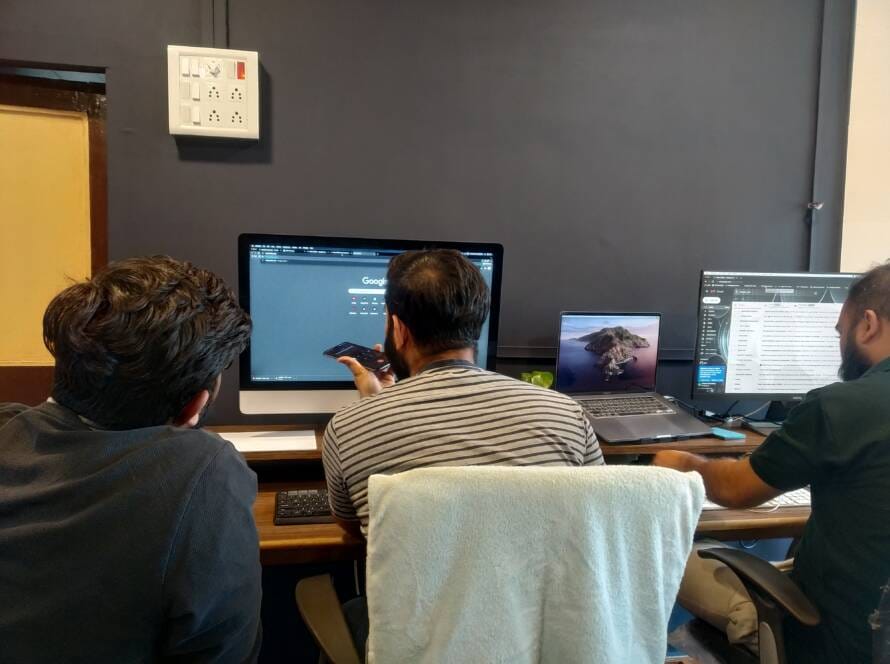Introduction
In a world overflowing with visual clutter, only a few brands truly stand out and those that do owe their brilliance to rock-solid brand identity. But what exactly is brand identity? It’s not just a logo or a catchy tagline. It’s how people feel about your brand at first glance. That’s where graphic design becomes your brand’s superhero.
At the heart of many visually striking brands stands Quicktime, a creative agency that’s mastered the art and soul of brand identity through intentional, emotion-driven graphic design. Let’s dive deep into their creative journey.
The Genesis of Quicktime
The Founding Story
Quicktime was born in the lockdown chaos of 2019 when the world paused—but creativity didn’t. Founders Ganesh Nayak, Sumit Gala, and Rajas Chaudhary decided to take a leap of faith, combining their diverse backgrounds in art, animation, and marketing to launch a full-service creative agency.
Core Mission and Vision
From day one, Quicktime’s vision was clear: make brands unforgettable. Their mission? Deliver visually arresting solutions that go beyond aesthetics and dive into strategic storytelling.
Quicktime’s Design Philosophy
Designing with Purpose
Every color, every line, every pixel—at Quicktime, nothing is random. Design is treated as a strategic tool rather than decoration. Whether it’s a poster or a brand overhaul, it must serve a purpose.
Human-Centered Creativity
Instead of chasing trends, Quicktime believes in designing for people. Their design process starts with empathy—understanding the user, the client’s audience, and what makes them tick.
Understanding the Brand Before Designing
Before the pen hits the sketchpad, Quicktime invests time in understanding the brand’s DNA.
Market Research & Client Interviews
They conduct deep-dive interviews and surveys to get under the skin of the client’s goals, values, and audience perception.
Competitor Analysis
They benchmark visual elements across competitors to identify gaps and opportunities for visual differentiation.
Brand Personality Mapping
Is the brand bold or minimal? Luxurious or friendly? Quicktime maps these traits to build a visual language that speaks the brand’s truth.
Quicktime’s Step-by-Step Graphic Design Process
Initial Brainstorming and Moodboarding
Ideas are tossed, mood boards built, inspiration pinned, and a visual direction starts forming.
Color Theory and Palette Selection
Colors evoke emotions. A vibrant palette screams energy, while muted tones whisper elegance. Quicktime knows exactly how to strike the right chord.
Typography and Logo Development
Fonts matter—a lot. Pairing the right typefaces with logos is both science and art. Quicktime nails that balance, every single time.
Layouts, Grids, and Consistency
From brochures to billboards, consistency is king. Grids, margins, and layout systems are followed religiously to maintain brand harmony.
Iconic Projects That Defined Quicktime
Case Study: Rebranding for a Tech Startup
Quicktime transformed a bland SaaS company into a vibrant, trustworthy digital brand—complete with new logos, landing pages, pitch decks, and social media templates.
Case Study: Event Branding for a National Conference
They turned a generic medical conference into a memorable visual experience using banners, brochures, digital invites, and interactive motion graphics.
Case Study: Packaging Design for an FMCG Brand
Quicktime created packaging that flew off shelves—proving design can literally boost sales.
The Role of Emotion in Graphic Design
Humans buy with emotion, not logic. Quicktime infuses this principle into every piece they design.
Creating Emotional Connections
A strong visual instantly conveys trust, joy, excitement—or whatever emotion the brand wants to spark.
Visual Storytelling Techniques
From storytelling logos to narrative-driven brand decks, Quicktime brings visual cohesion to the brand’s journey.
Collaborative Work Culture
Designers, Writers, and Strategists in Sync
Quicktime functions like a band—each member playing a different instrument but all in tune. Writers, designers, strategists, and animators work in harmony.
Client Feedback Loops
Feedback isn’t an afterthought—it’s a creative input. They iterate fast and listen deeply.
Challenges Faced Along the Journey
Tight Deadlines and Burnout
The creative hustle is real. Late nights, last-minute changes, and tight timelines are part of the game. Quicktime combats this with planning and team support.
Handling Subjective Feedback
“Make it pop” or “It just doesn’t feel right”—the team has heard it all. But they’ve learned to decode vague client feedback into actionable design insights.
Adapting to Industry Trends
Trends come and go. Quicktime’s secret? Blend timeless design principles with just the right dose of trendiness.
The Tools That Power Quicktime’s Creative Team
- Adobe Creative Suite: The foundation of design work.
- Figma: For real-time collaborative prototyping.
- AI Tools: Quicktime integrates AI tools for idea generation and workflow automation—but never lets it replace human creativity.
Evolving with Time: Trends Quicktime Embraced
Minimalism and Flat Design
Less is more. Clean, clutter-free design has become a Quicktime signature.
Responsive Design Systems
Designs that look perfect everywhere—on billboards or mobile screens.
Motion Graphics and Animation
Quicktime’s animation team brings brands to life with snappy explainer videos, reels, and 3D product spins.
Sustainable and Ethical Design Practices
Eco-Conscious Print Design
They promote soy-based inks, recycled paper, and minimal wastage in their print campaigns.
Accessibility in Visuals
From font size to color contrast, Quicktime ensures their designs are inclusive for all.
Inclusion and Representation in Imagery
Gone are the days of generic stock photos. They curate visuals that reflect diversity and authenticity.
Client Success Stories
Boosting Conversions Through Visual Rebranding
One D2C brand saw a 45% increase in conversions post Quicktime’s design revamp.
Creating Viral Digital Campaigns with Visual Identity
Their social media campaigns have clocked millions of impressions—proof that good design travels fast.
Lessons Learned from the Journey
What Worked and What Didn’t
What worked: listening more, designing less.
What didn’t: skipping the research phase.
Advice for Young Designers
Start small, stay curious, seek feedback, and never settle for “good enough.”
Conclusion
Quicktime’s journey is more than just a timeline of projects—it’s a living proof that great design builds great brands. From humble beginnings to handling multi-industry clients, they’ve shown that capturing brand identity is not a one-time task—it’s an evolving, creative commitment.


